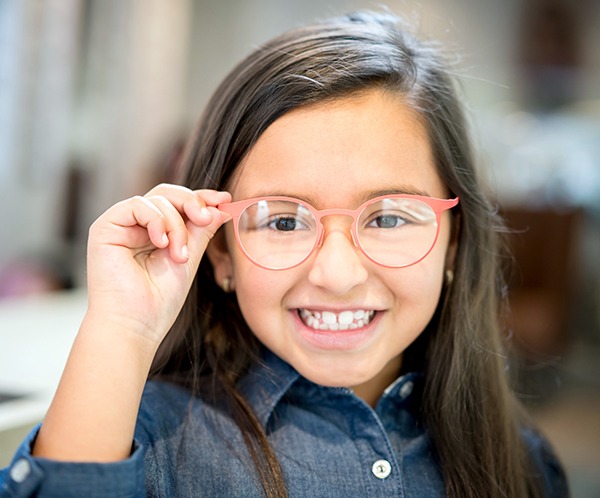Myopia Control
Nearsightedness

Nearsightedness, or myopia, is an eye condition where objects nearby are clear but objects far away are blurry. Myopia typically occurs because the eyeball grows too long during childhood.
What is Myopia Control?
Myopia control is the use of specific treatments to slow the progression of nearsightedness in children. Myopia control is important because it may help reduce the risk of vision-threatening complications associated with high myopia later in life — including glaucoma, cataracts, retinal detachment and even blindness.

What is Myopia Control?
Myopia control is the use of specific treatments to slow the progression of nearsightedness in children. Myopia control is important because it may help reduce the risk of vision-threatening complications associated with high myopia later in life — including glaucoma, cataracts, retinal detachment and even blindness.
Why Is My Child Myopic?
- HEREDITY. If both parents are nearsighted, there is a greater risk that their kids will be nearsighted too.
- NEAR ACTIVITIES. Children who spend a lot of time performing near activities (reading, using hand-held electronics, etc) have a greater risk of becoming nearsighted. Research shows that spending more time outdoors lowers the risk of childhood myopia.
Why the Increase?
More people are becoming myopic. In the early 1970s, only 25% of Americans were nearsighted. Today, the prevalence of myopia has increased to over 42%. And in some Asian countries, up to 80% of the population is myopic.
Why the Concern?
- CATARACTS. Most cataracts are associated with the aging process, but they develop sooner in nearsighted eyes.
- GLAUCOMA. Nearsighted people have a two-three times greater risk of developing glaucoma.
- DETACHED RETINA. Nearsightedness increases the risk of retinal detachment–in addition, the higher the myopia, the greater the risk.
Can You Slow the Progression?
YES! Most people can slow down or stop their eyes from becoming more myopic (nearsighted). Stronger glasses each year should not be normal. There is no cure, but you can most likely improve how your eyes are changing. Currently, our office focuses on 3 myopia control treatments: atropine eye drops, multifocal contact lenses, and corneal molding.
Your Options
The Doctors at Vision Source-Eye Center of the Triad will take a very personal approach to each case. We will customize our treatments to your child’s situation to ensure the experience is successful. Every family is unique and every child needs a plan that will not only slow their myopia but open them up to a new world of possibilities for their vision. We will be there for you every step of the way to answer all your questions and to make sure your child has a great experience.
Wave Corneal Molding
WCM is a non-surgical process which reshapes the cornea of the eye utilizing special contact lenses known as Corneal Molds (retainers), thereby reducing the dependence on corrective eyewear. This is especially beneficial for children and young adults whose vision may still be changing. It allows us to drastically slow, if not stop, the progression of change in their vision.
Atropine Eye Drops
The effect atropine has on accommodation may be what accounts for its effectiveness in also reducing the progression of myopia in children. Some studies have shown that atropine is the most effective way of controlling myopia and that its use can reduce myopia progression by up to 77 percent.
Multi-Focal Contacts
Multifocal contact lenses are primarily designed to provide clear vision at all distances for people who have refractive errors, including myopia. A recent study concluded that nearsighted children who wore multifocal lenses on a daily basis had a 50 percent reduction in the progression of their myopia.

